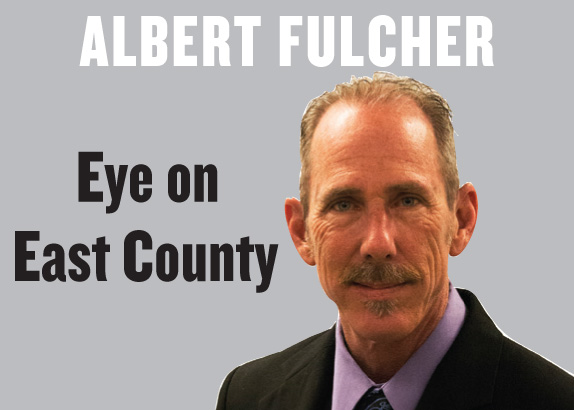Our first winter storm of the year is a doozy, and already taking its toll in our communities. A man was found dead in the Santee drainage channel, a Spring Valley man had to be rescued from his car trying to drive through a flooded out road and the wind is spreading debris all over the place.
Our first winter storm of the year is a doozy, and already taking its toll in our communities. A man was found dead in the Santee drainage channel, a Spring Valley man had to be rescued from his car trying to drive through a flooded out road and the wind is spreading debris all over the place.
We cannot say that we were not warned, as El Niño has been a top subject now for months. But have we all been listening. Worst prediction indicated that we are going to be hit through this rainy season wave after wave, and if this first storm is any indication, it already is.
Each of our communities has had one or more El Niño discussion groups giving us tips on how to stay safe and dry, and hopefully these discussions will continue, as it looks like we are in for a cold, wet winter.
I live in a flood prone zone, and all it takes is the perfect combination of heavy rain, high surf to send water flowing over our streets and into our homes. We have taken this seriously, collecting barrels to catch the rain, lifting important items up off the floor and are getting ready to place plywood on our back porch, as the tarps we normally use are flimsy and unreliable with high winds and heavy rain. We have also invested in sand bags and straw to block rain from prone areas around our home. But it is a hit and miss guess whether or not we have done enough.
Here in East County, we have just as much to worry about, if not more. With the many wildfires that have devastated this region over the past years we run the risk of mud and rockslides and flooding. In watching the news with the great floods happening around the Mississippi River, it is evident that flooding is another one of nature’s natural disasters just waiting to happen as it has brutalized the areas leaving people without homes, costing lives and losing life time memories.
Our emergency crews are preparing for the worst, and so should we. As great as they are in doing everything to protect our homes, we have to be more vigilant in protecting our families, our animals and ourselves. This not only means having the tools to help keep water, mud and rocks from destroying our houses, but also in keeping the things that are most precious to us safe. Many of us work and are unable to have someone at home to make sure that everything can be done to keep afloat during this season, and it is best that everyone plan for some of the worst case scenarios predicted. For those who have pets, small or large, it is up to us to make sure that there is an emergency plan for them as well as our families, as in most cases they are part of our families and even livelihood.
We need to be vigilant. Keep extra food, water, important records and medical supplies within a quick reach. Have an evacuation plan for your family and your animals. It is much easier for those who live with small pets such as dogs and cats, but for those here in our backcountry, horses, cattle and farm animals are much more difficult to deal with when evacuation is necessary.
But you do not have to do this alone. Look at what your city, county and emergency services are doing and what resources they have to help avoid losing what you have worked so hard for. Also, work with your neighbors with a neighborhood emergency plan. It can make a world of difference if you are not at home, but you have a neighbor that is watching your back, and your property. Hopefully, we will not need these things, but the risk is higher than seen in many years and our dry soil is not prepared for the deluges of water coming our way. We can only do so much, but we should be doing everything within our possibilities.
Last, but certainly not least, is being careful on our roads and highways. I was amazed at how fast people are flying down the freeways when the rain is falling so hard that the visibility is near zero. Already, this first storm has caused tremendous damage to our vehicles in the many car crashes and people trying to drive through water that is impassable. It is not worth the risk. If you do not know how deep the water is, find a way around, and please drive slower on all roads. They are slick, cars are hydroplaning and lives are at stake.
Be prepared for the worst case scenarios, and use common sense on the roads and perhaps we will make it through these winter storms with as little damage as possible.













